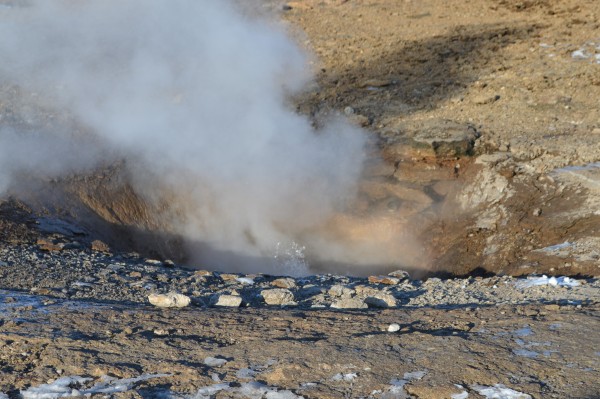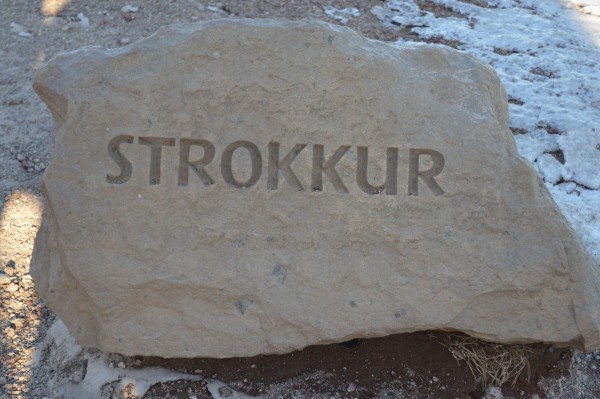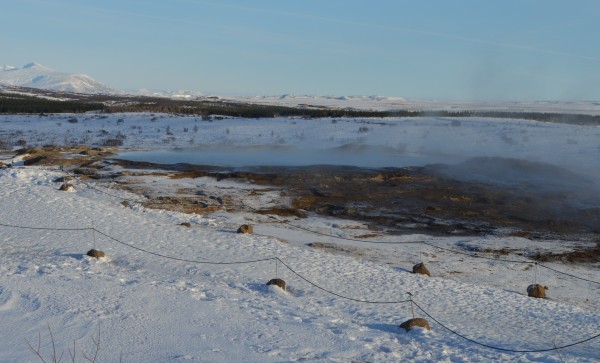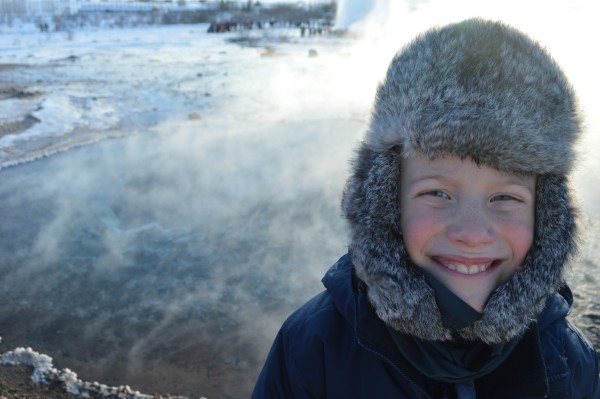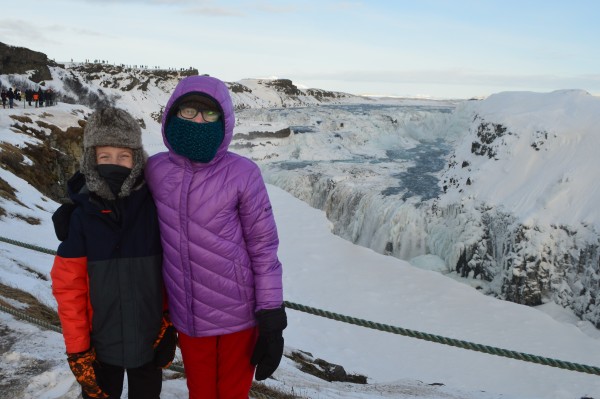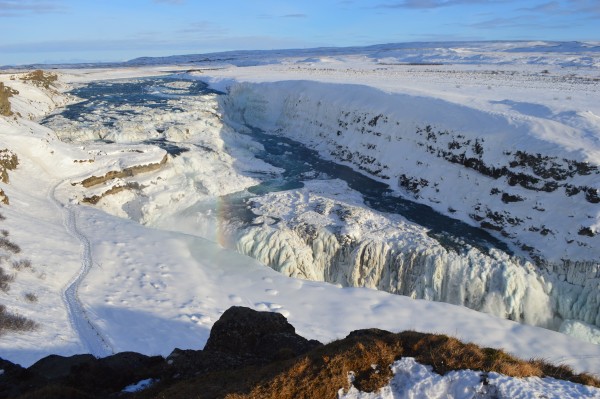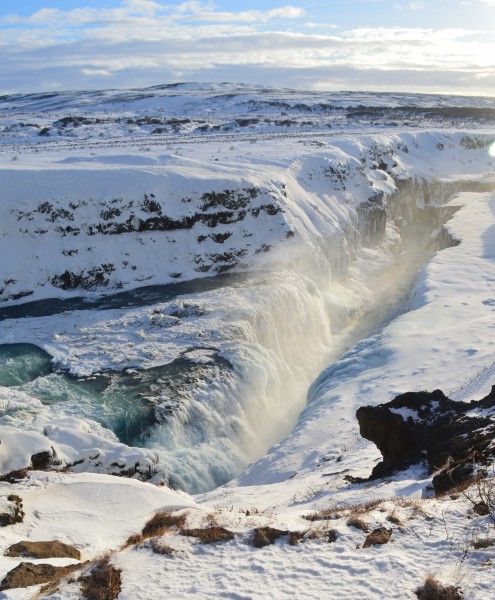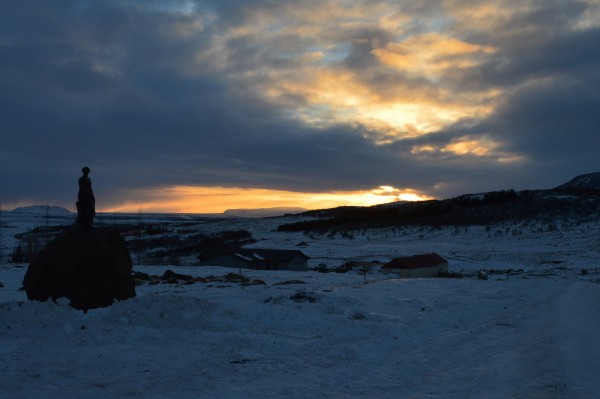Sunday, February 10, we checked out of our apartment in the Butterfly house and drove out along the ring road, into the Golden Circle. The first part of our drive took us along the same road that we traveled to see the northern lights. We could see remnants of the snow drifts along the sides of the road.
This time of year in Iceland the sun never really goes UP in the sky, it just arcs across the horizon, so it is always in your eyes while driving. This photo was taken a little before noon.
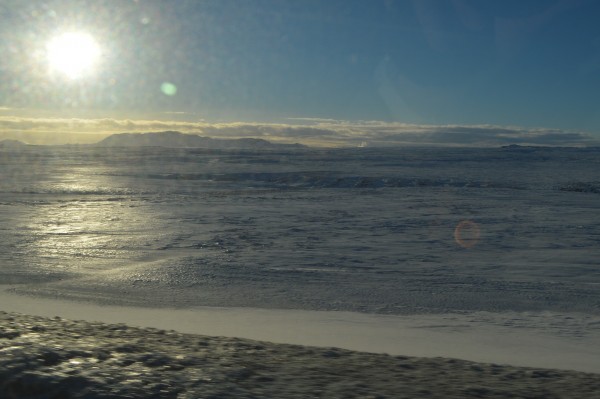
We stopped at a lookout in Þingvellir to stretch our legs.
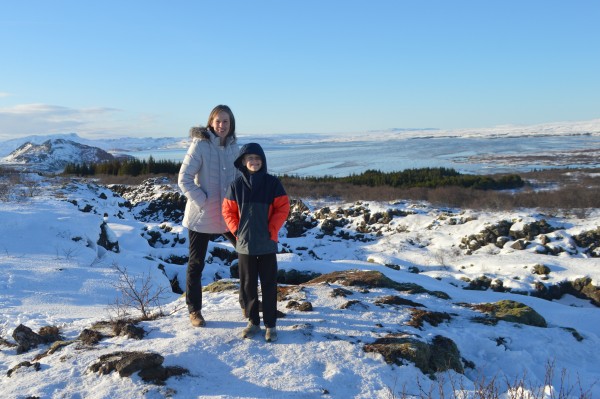
The Icelandic horses that dotted the countryside looked so furry and cute. We wanted to stop and pet them, but never found the right opportunity.
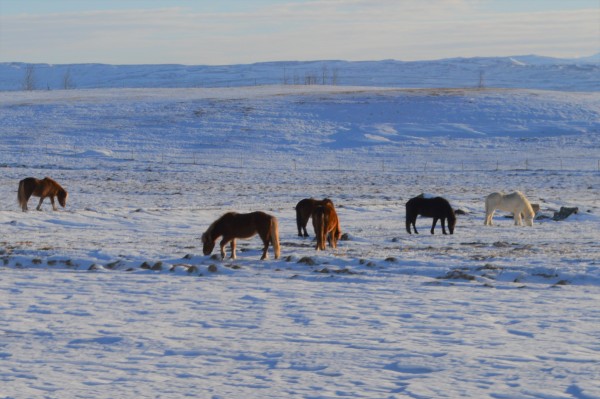
Eventually, we made it to the Haukadalur geothermal area. This geothermal field is on a 100-meter-wide strip of land that runs in the same direction as the tectonic lines in the area, from south to southwest. There are more than a dozen hot water blow holes.

The warm runoff water from the geysers cut a path through the ice.
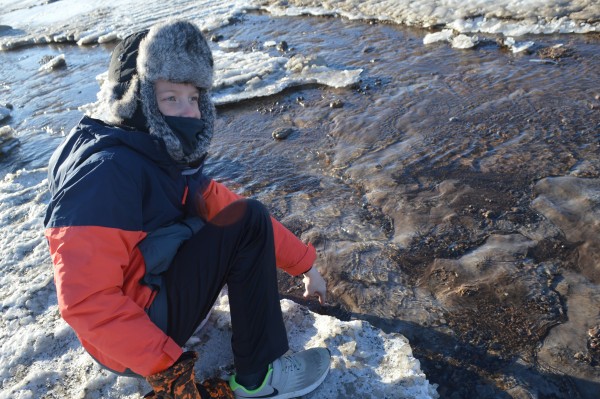
Strokkur is Iceland’s most active geyser, spouting water 100 feet into the air every 4-10 minutes.
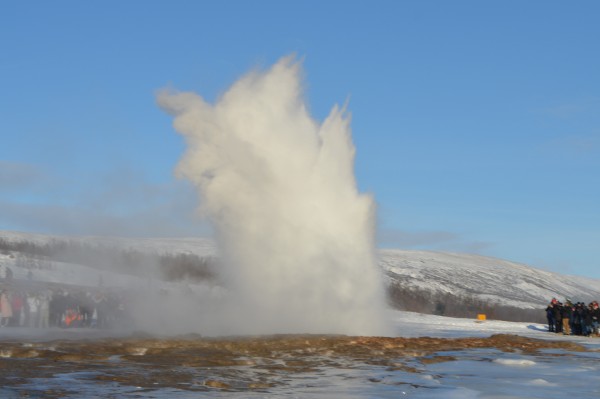
Iceland’s most famous geyser is Geysir. It wasn’t much to look at while we were there, but it is the most famous geyser in the world alongside Old Faithful. Geysir was the first geyser known to Europeans (mentioned clear back in 1294) and it lends its name to geysers all over the world. Seismic activity in the area greatly impacts Geysir’s eruptions. After being dormant for years, an earthquake in 2000 caused eruptions that reached up to 400 feet in height and lasted for two days. This made Geysir one of the highest geysers ever in history. The eruptions continued around eight times a day but slowly decreased, by July 2003 the activity was only happening three times a day. The last time Geysir erupted was February 2016.
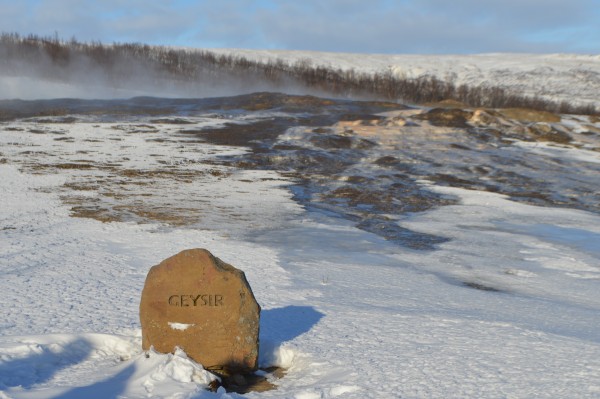
Mom, Carter, and Daddy in front of Konungshver

One last eruption from Strokkur on our way out.
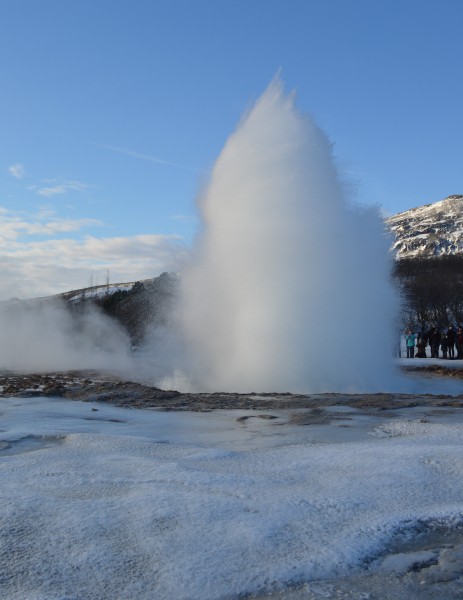
Our next stop was Gullfoss (Golden Falls) waterfall. The Hvítá river flows down into a wide curved three-step “staircase” and then abruptly plunges in two stages (36 feet and 69 feet) into a crevice 105 feet deep. It is pretty unbelievable that water moving that fast and falling that hard could freeze at all.
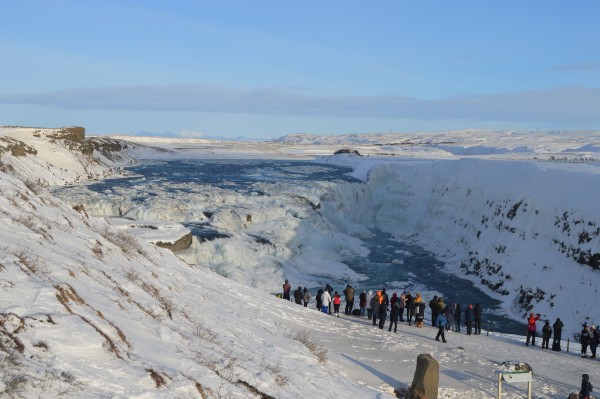
Hiking up and down the icy stairs to the lower viewing area was treacherous, but worth the view.
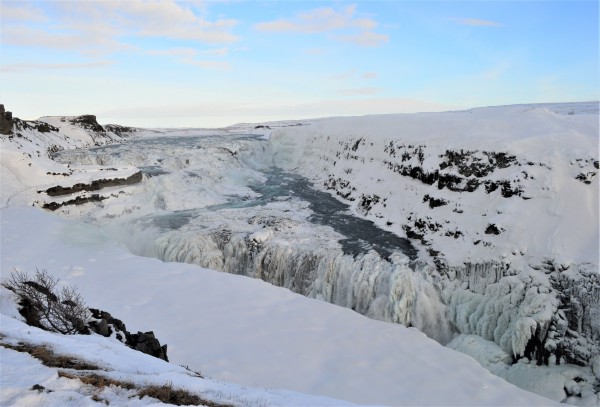
After we were sufficiently frozen, we headed to Úthlíd Cottages where we spent the next couple nights.
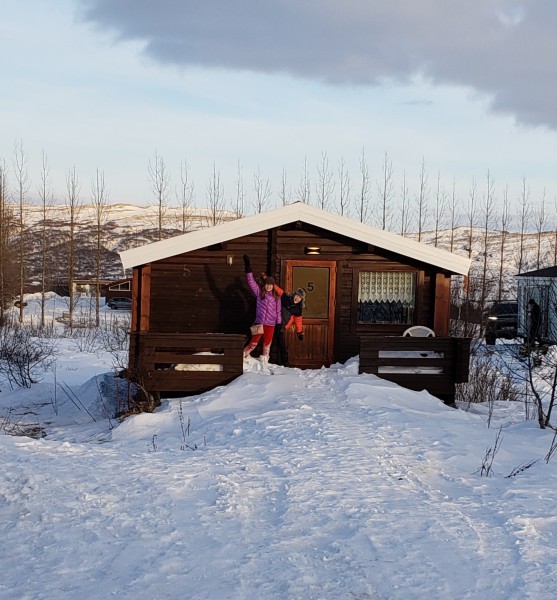
Our two-bedroom tiny house was toasty warm and the perfect setting to enjoy Iceland.

Raine and Carter built a snow fort in the drift behind the cabin while we cooked dinner.



